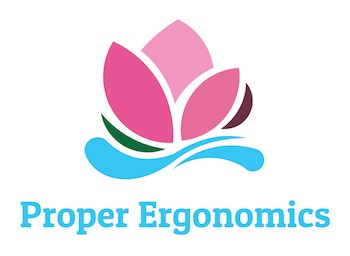Buying a mattress is a much more intimidating decision than it used to be. There are several different kinds of mattresses that seemingly fulfill totally different needs, and navigating the market is not as easy as it once was. We will take a look at what separates these kinds of mattresses based on how they approach the needs of the consumer.
Mattress Material
The most obvious difference between the many mattresses available is the material used to support your body as you sleep. Materials vary in the way they support you as well as how comfortable they are to different kinds of sleepers. One mattress may be perfect for one person and completely uncomfortable for another; this guide will assist you in narrowing down what suits your body. We will be looking at many of the most common mattress designs and materials.
Innerspring Mattresses
The most common type of mattress you will come across is the innerspring or coil mattress. This is the kind we are all most likely already familiar with or have experienced sleeping on at one point. There are actually quite a few approaches to the innerspring mattress, and they all offer slightly different results. The four main kinds are continuous coils or bonnell coils, offset coils, and pocketed coils. Most often what kind of innerspring mattress you choose will depend upon budget and your needs.
Bonnell coils or continuous coils are what you are most likely to encounter when shopping for an innerspring mattress. This is because they are more cost effective, but also represent a few possible risks. The coils themselves are made of one continuous coil, hence the name, and are not as durable or long lasting as consumers wish.
Offset coils and pocketed coils offer a higher comfort level in comparison to the more cost effective design of continuous coils. Offset coils actually have a similar shape to continuous coils; the difference lies in the construction of the coils. The coils are a more flexible shape at the top and bottom, which changes the way the mattress feels as you move around.
Pocketed coils have a similar intent in that they aim to create more separation, and therefore less overall movement, between the individual coils. This is achieved by individually encasing each coil in pockets of their own.
Foam Mattresses
Typically when a consumer hears “foam mattress” they think of the widely marketed memory foam mattresses that have staked their claim so well. The memory foam mattress is certainly the most popular option available, but there are several different approaches and materials developed to achieve varying results from the foam mattress.
Memory Foam Mattresses
Memory foam itself is incredibly popular due to its enveloping, sinking sensation. As you are probably already thinking, this suits a particular kind of sleeper. Some people may find this to be detrimental to their sleep quality while others find this to be a comforting feeling that is necessary for proper sleep. This effect is meant to provide additional support for those that suffer from discomfort and require a material that conforms to your body shape.
One of the most common complaints associated with memory foam mattresses is their tendency to trap excessive amounts of heat during sleep. We will discuss a possible solution to those whose comfort needs would be addressed by memory foam, but have trouble sleeping with the heat that comes with them.
Gel Foam
The title here is a little misleading in that we have already gone over a significant part of this kind of mattress. The “gel foam” mattress refers to memory foam that has been infused with gel. The purpose of doing this is to mitigate one of the problem areas of the memory foam mattress we discussed. Memory foam traps heat well and could make certain people uncomfortable; this creates an alternative for those who find themselves feeling too hot when using a standard memory foam mattress.
Polyurethane Foam Mattresses
The polyurethane foam mattress, while less well marketed than the memory foam mattress, is much easier to manufacture and is generally more common. Polyurethane represents the exact same trade off you find with continuous coils; you are sacrificing quality for a more affordable product.
Unlike the memory foam mattress, polyurethane does not provide the spinal support most are looking for when considering a foam mattress. In addition, polyurethane foam mattresses do not possess the same “memory” quality and will not return to their manufactured shape after a certain level of use. This makes the polyurethane a poor long term solution for most.
Latex Rubber Foam Mattresses
The last kind of foam mattress we will go over is the latex rubber foam mattress. There are not many downsides to either the manufacturing or use of these mattresses. Those who are environmentally conscious will be pleased to know that latex rubber foam manufacturing is much lower in carbon emissions than your typical mattress material. Of course, this is a consideration that is going to be more important to some and less to others. Latex rubber foam also offers a high level of comfort and support, so there are benefits beyond the natural, renewable materials used in the manufacturing process.
Waterbeds
Consumers do not typically hear the term “waterbed” and think of a luxurious sleeping experience, but that does not mean you should write them off as you search for your ideal mattress. You should exhaust all of your possible options when it comes to selecting something so vital to your health. Mattresses are a very personal choice after all, so you should not allow a product’s reputation to get in the way of what it could offer you. Waterbeds have a conforming quality to them that can be soothing.
There is a possibility that you will find this to be not as supportive as you may like. There are really only two options available to you as far as what designs you will find. Hardside waterbeds retain their shape by using a frame more like a conventional mattress, while softside waterbeds are the design you would typically expect to see.
Making An Educated Choice
The most important part of buying a mattress is doing the proper research and figuring out what works best for your body. As you can see, there are several kinds of mattress material with different designs to suit your exact needs. This can be difficult if you approach buying your mattress without first educating yourself on what’s already available out there. The truth is that there is no perfect mattress for everybody, and that you will likely have to find what works for you.



